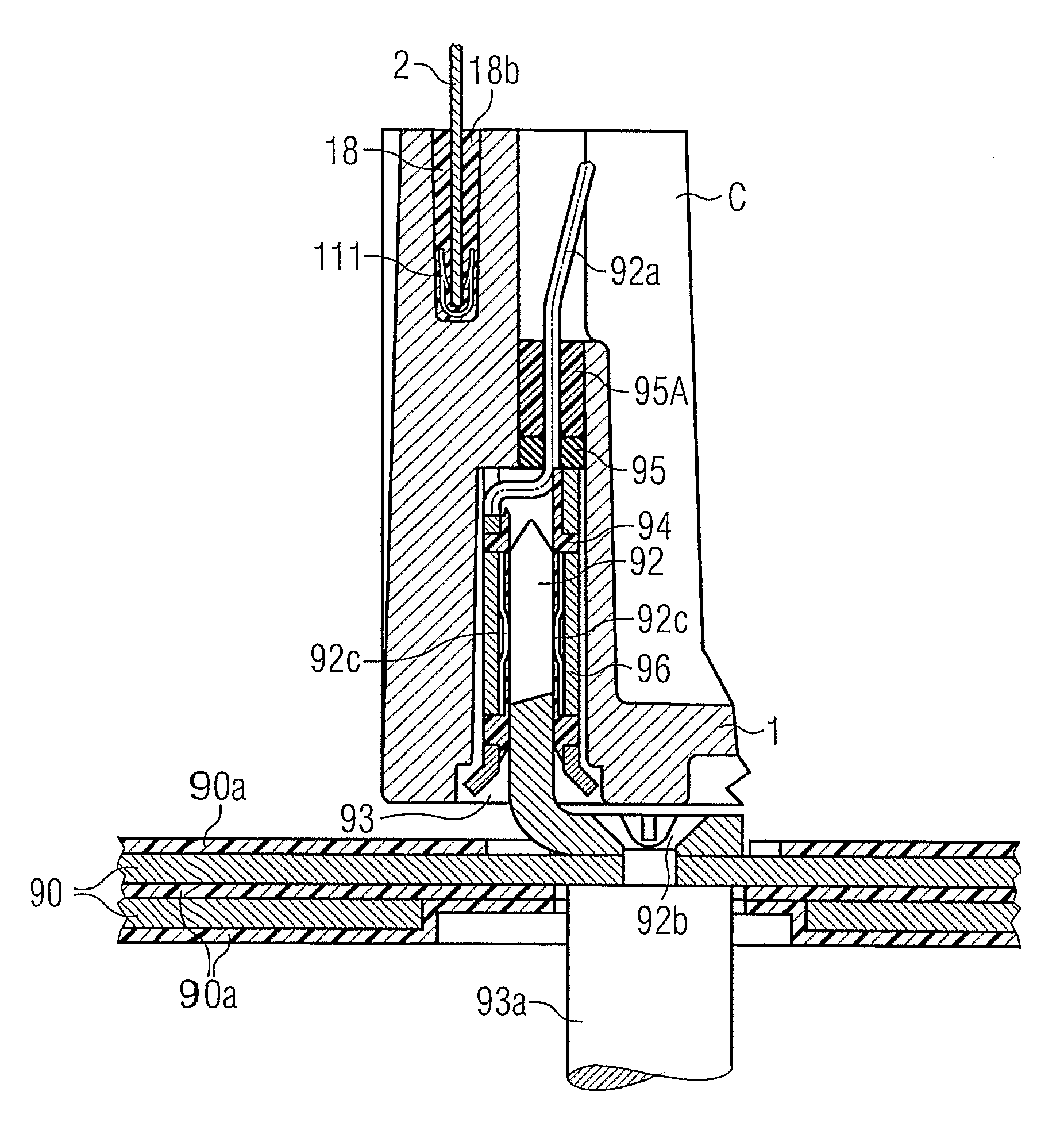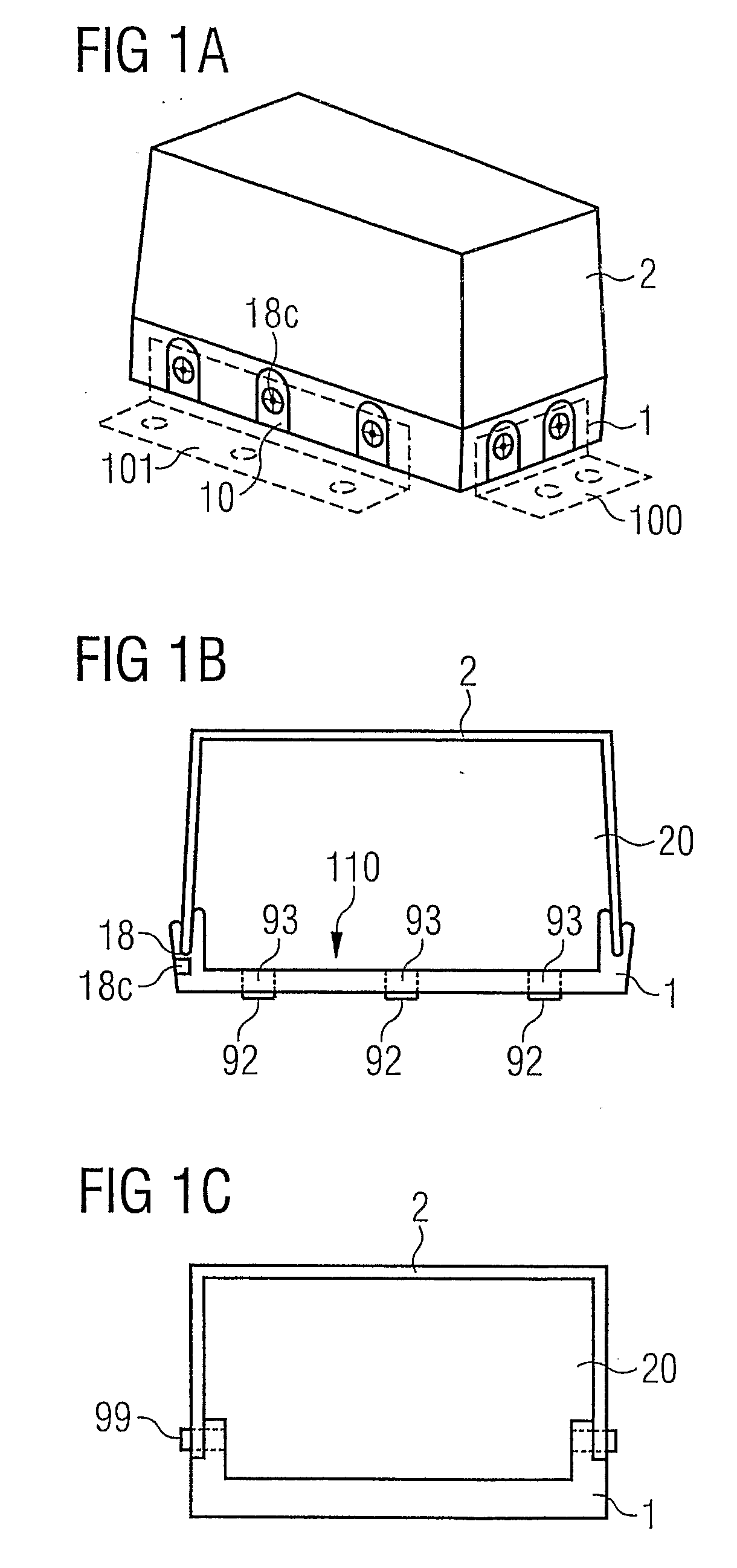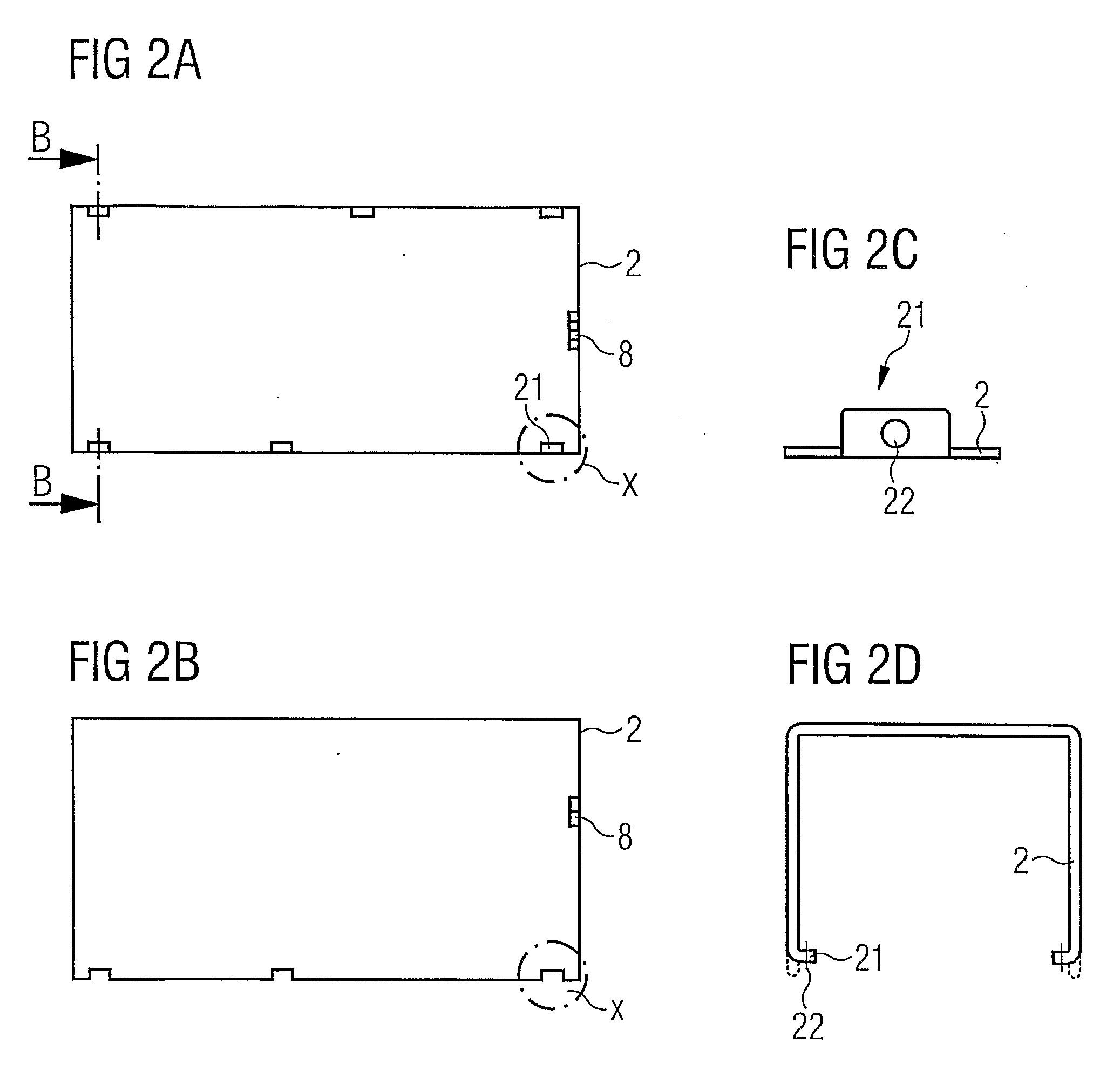Housing for High Performance Components
- Summary
- Abstract
- Description
- Claims
- Application Information
AI Technical Summary
Benefits of technology
Problems solved by technology
Method used
Image
Examples
Embodiment Construction
[0105]FIG. 1A shows a perspective view of a housing according to the invention with a carrier platform 1 and a cover 2. The carrier platform 1 is produced, e.g., in a pressing method from a fiber-composite material. Matching the thermal expansion coefficients of the carrier platform to that of the cover is achieved in that a corresponding percentage of reinforcing-glass fibers is provided in the material of the carrier platform.
[0106] In this variant of the invention, all of the necessary contact-forming elements (electrical feedthrough sockets) for electrical connection of the inside and outside of the corresponding module, as well as devices (inserts 18c) for receiving attachment elements, such as, e.g., attachment brackets, are integrated into the insulating carrier platform 1.
[0107] The side walls of the carrier platform 1 feature a shaped bevel apart from the limiting surroundings of the inserts, i.e., areas in which inserts 18c are installed. These areas represent recesses 1...
PUM
 Login to View More
Login to View More Abstract
Description
Claims
Application Information
 Login to View More
Login to View More - Generate Ideas
- Intellectual Property
- Life Sciences
- Materials
- Tech Scout
- Unparalleled Data Quality
- Higher Quality Content
- 60% Fewer Hallucinations
Browse by: Latest US Patents, China's latest patents, Technical Efficacy Thesaurus, Application Domain, Technology Topic, Popular Technical Reports.
© 2025 PatSnap. All rights reserved.Legal|Privacy policy|Modern Slavery Act Transparency Statement|Sitemap|About US| Contact US: help@patsnap.com



